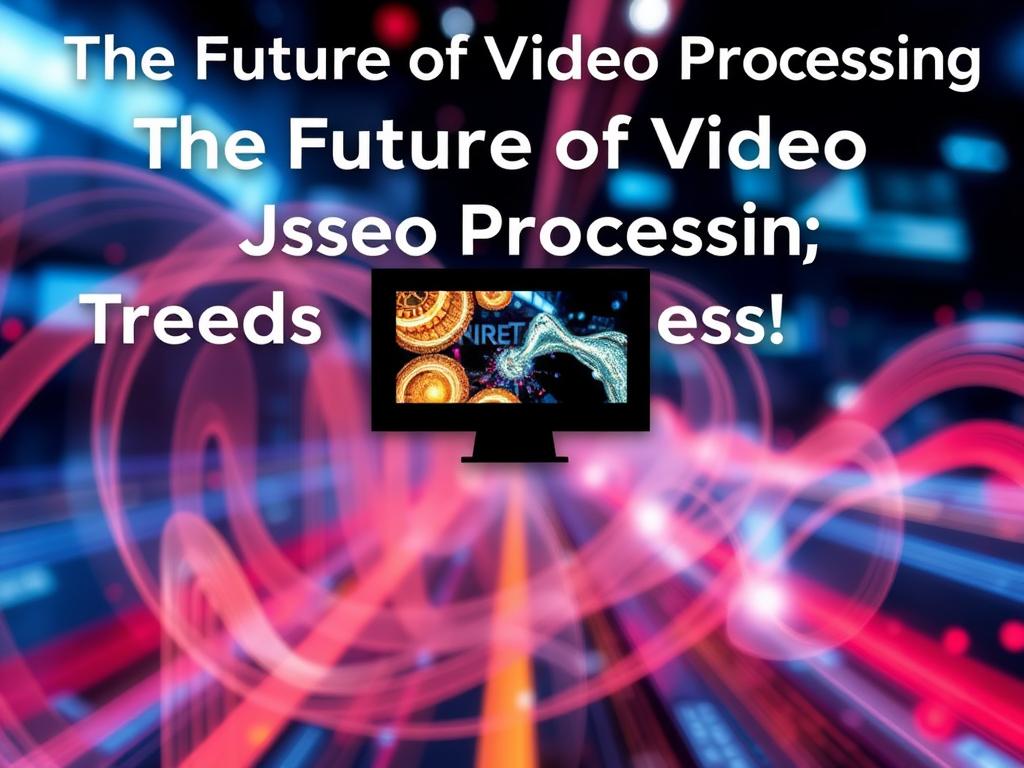Video processing has rapidly evolved from simple editing and playback to an intricate dance of artificial intelligence, enhanced resolutions, and lightning-fast delivery systems. Whether you’re a casual viewer streaming your favorite shows or a professional editor crafting cinematic masterpieces, video processing touches every facet of our digital lives. But what does the future hold for this dynamic field? How will emerging technologies shape the way we create, manage, and enjoy video content? In this article, we’ll dive deep into the exciting trends and innovations driving the future of video processing, examining how advancements in machine learning, real-time rendering, and cloud computing are transforming the industry.
Understanding Video Processing: A Foundation
Before we explore future trends, it’s important to understand what video processing entails today. At its core, video processing refers to the manipulation and transformation of video data to improve quality, add effects, enable compression, or facilitate streaming. This may involve color correction, noise reduction, frame interpolation, or encoding formats. Video processing technologies enable everything from the smooth playback of 4K movies on smartphones to the sophisticated real-time filters in video conferencing apps.
As video content expands—fuelled by social media, OTT platforms, and immersive experiences—the demand for more efficient and intelligent video processing becomes paramount. Traditional methods that focus solely on hardware acceleration or static algorithms are giving way to adaptive, AI-powered techniques.
Key Trends Shaping the Future of Video Processing
Let’s take a closer look at some of the major trends defining this vibrant field:
1. Artificial Intelligence and Machine Learning Integration
One of the most transformative innovations in video processing is the integration of artificial intelligence (AI) and machine learning (ML). These technologies enable software to learn patterns within video data and apply enhancements or corrections autonomously. For instance, AI can upscale lower-resolution videos to near-4K quality, reduce noise in low-light footage, or apply dynamic color grading that adapts to each scene.
Moreover, AI-driven video analytics enable better content indexing, automatic tagging, and metadata generation, making it easier for users to search and organize vast video archives. The rise of generative models also promises exciting possibilities in creating synthetic video content, such as deepfakes and virtual avatars, presenting both new creative tools and ethical challenges.
2. Real-Time Video Processing and Streaming

The demand for live video content continues to surge—from esports and webinars to live shopping and virtual concerts. This puts pressure on video processing technologies to operate in real time without compromising quality.
Emerging solutions leverage edge computing, which moves data processing closer to the source (like smartphones or local servers), significantly reducing latency. Combined with faster encoding algorithms and adaptive streaming protocols, users can enjoy smoother, high-quality live experiences on various devices, even with limited bandwidth.
3. High Dynamic Range (HDR) and 8K Resolutions
As display technologies advance, there’s a growing demand for video content with richer colors, deeper contrasts, and sharper details. HDR and 8K video are pushing the boundaries of what was traditionally possible, requiring more robust video processing to handle these huge data streams efficiently.
This shift demands better compression algorithms that maintain quality while reducing file sizes, as well as improved decoding capabilities on end-user devices.
4. Cloud-Native Video Processing

Cloud computing is revolutionizing how video processing workflows are managed. Instead of relying on local machines, many companies are migrating to cloud-native platforms that offer scalability, collaboration, and cost-efficiency.
Cloud services enable on-demand video transcoding, AI-powered editing, and global content delivery. This is especially beneficial for content creators managing large volumes of videos, allowing them to process, store, and distribute material seamlessly across platforms.
5. Immersive Video and Augmented Reality (AR) Integration
With the rise of immersive technologies, video processing is evolving to include 360-degree videos, VR content, and AR overlays. Processing these multi-dimensional formats requires specialized techniques such as spatial stitching, depth mapping, and motion stabilization.
These innovations open up new storytelling methods and user interactions, particularly in gaming, education, and virtual tourism.
Innovations That Will Define Tomorrow’s Video Processing
Alongside these trends, several groundbreaking innovations are poised to further transform video processing in ways we might not yet fully comprehend.
Neural Video Compression
Traditional compression algorithms focus on reducing file sizes by exploiting redundancy. Neural video compression takes this a step further by leveraging deep learning networks to predict frame data with remarkable accuracy. This can potentially lead to dramatic bandwidth savings and faster streaming without sacrificing visual fidelity.
Edge AI Chips for Video Processing
As AI models grow more complex, specialized hardware is necessary for efficient processing on devices like smartphones and drones. Edge AI chips designed specifically for video processing tasks enable real-time enhancements such as super-resolution, HDR conversion, and object tracking, all without needing cloud connectivity. This delivers better privacy and lower latency.
AI-Powered Video Editing Assistants
Editing videos is often time-consuming and requires expertise. Future AI assistants will automatically create rough cuts, choose the best shots, and apply effects based on the content and the user’s preferences. These smart tools will democratize video editing, allowing anyone to produce engaging, professional-quality content.
Quantum Computing and Video Processing
While still in its infancy, quantum computing has the potential to dramatically speed up complex video processing tasks such as encryption, compression, and rendering by harnessing quantum bits’ unique properties. Though the technology remains experimental, its future implications for video processing are tantalizing.
Comparison Table: Current vs. Future Video Processing Technologies
| Aspect | Current Technologies | Future Innovations |
|---|---|---|
| Resolution Support | Up to 4K UHD | 8K and beyond with real-time HDR |
| Compression Algorithms | H.264, HEVC (H.265) | Neural compression with AI prediction |
| Processing Location | Primarily local or centralized cloud | Distributed edge AI chips and cloud-native |
| Editing Tools | Manual, software-driven workflows | AI-assisted automatic editing and effects |
| Content Type | 2D videos, basic streaming | Immersive 3D, VR, AR integrated videos |
Challenges Ahead in Video Processing Development
While the future shines bright, several hurdles must be overcome for these innovations to mature fully. One major issue is balancing computational power with energy efficiency—advanced video processing requires significant resources, which can strain mobile devices and create environmental concerns.
Privacy also remains a critical consideration, especially with AI-driven content generation and analysis. Ensuring ethical standards and preventing misuse of technologies like deepfakes will require dedicated policies and technical safeguards.
Furthermore, widespread adoption depends on standardization and interoperability across different platforms, devices, and content formats. The industry must collaborate to develop open standards that support seamless experiences for users worldwide.
How Will This Impact Everyday Users and Professionals?
The future video processing landscape promises to benefit everyone—from casual consumers to industry professionals. For everyday users, ubiquitous AI enhancements mean higher quality video streaming at lower data costs, more immersive content, and smarter video apps that anticipate preferences.
For creators, these technologies open doors to rapid production cycles, enhanced storytelling tools, and better content discoverability. Businesses leveraging video marketing and communications will find cost-effective, scalable solutions in cloud-native workflows combined with AI-powered insights.
- Enhanced video clarity and stability for home videos
- Seamless multi-platform live streaming with low latency
- Automated video summaries and highlights for faster viewing
- Interactive AR overlays enriching educational and entertainment content
Ultimately, the evolution of video processing will nurture creativity, connectivity, and accessibility on an unprecedented scale.
Conclusion

The future of video processing is incredibly promising, shaped by powerful innovations like artificial intelligence, real-time streaming, cloud-native platforms, and immersive media technologies. As these trends converge, video content will become more vibrant, accessible, and engaging than ever before, transforming how we communicate, entertain, and learn. Yet, along with these exciting developments come responsibilities—rethinking ethical standards, improving energy efficiency, and fostering collaboration among stakeholders. For anyone passionate about the potential of digital media, staying informed and adaptable in this fast-evolving field is the key to embracing the remarkable new era of video processing that lies just ahead.